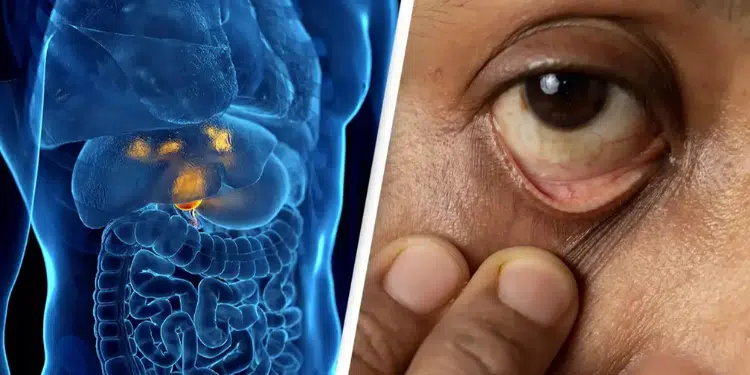Gallbladder cancer, a rare form of gastrointestinal cancer, is surging among young people, and experts are sounding the alarm.

Data from Cancer Research UK reveals an 84% increase in cases of gallbladder cancer among Britons aged 24 to 49 since the early 1990s.
While gallbladder cancer has historically been more common in older adults, the growing prevalence in younger populations is deeply concerning.
Researchers are now exploring the potential causes of this alarming trend, with lifestyle and environmental factors emerging as significant contributors.
What Is Gallbladder Cancer?
Gallbladder cancer originates in the gallbladder, a small organ beneath the liver that aids in digestion by storing bile. Symptoms often go unnoticed in the early stages, leading to late diagnoses and poorer outcomes.
Common symptoms include:
- Abdominal pain, particularly in the upper right quadrant.
- Unexplained weight loss.
- Jaundice (yellowing of the skin and eyes).
- Nausea and vomiting.
The Rising Trend Among Young People
Historically, gallbladder cancer has been considered rare, particularly among younger individuals.
However, the 84% increase in cases over the past three decades is shifting this narrative.
What’s Driving the Surge?
Researchers suggest that several factors could be contributing to the rise in gallbladder cancer among young people, including:
1. Increasing Rates of Obesity
Obesity is a major risk factor for gallbladder cancer. Excess body weight can lead to chronic inflammation and gallstones, both of which are linked to a higher risk of developing the disease. The rise in obesity rates among young people may be directly fueling this increase.
2. Poor Dietary Habits
Diets high in processed foods, saturated fats, and sugars can contribute to gallbladder issues, including gallstones, which are a precursor to gallbladder cancer. A lack of fruits, vegetables, and fiber in the diet exacerbates the risk.
3. Sedentary Lifestyles
A lack of physical activity, combined with long hours spent sitting, is contributing to poorer metabolic health, another factor linked to gallbladder and other gastrointestinal cancers.
4. Environmental Toxins
Exposure to certain chemicals and toxins, including those found in polluted air and processed foods, may play a role in the development of cancer.
Why Early Detection Is Crucial
Gallbladder cancer is often diagnosed at an advanced stage due to its subtle symptoms. Early detection can significantly improve treatment outcomes, but awareness of the symptoms and risk factors remains low.
Steps to Protect Yourself:
- Know Your Family History: A family history of gallstones or gastrointestinal cancer increases your risk.
- Monitor Symptoms: Don’t ignore persistent abdominal pain, jaundice, or unexplained weight loss.
- Regular Check-Ups: Routine health screenings can help catch potential issues early.
What Can Be Done to Reverse the Trend?
1. Promote Healthy Lifestyles
Encouraging balanced diets, regular exercise, and weight management can reduce the risk of gallbladder cancer.
2. Raise Awareness
Public health campaigns focused on educating younger populations about the risks of gallbladder cancer and its symptoms are essential.
3. Invest in Research
Increased funding for research into the causes and treatments of gallbladder cancer is crucial for understanding and addressing this growing health concern.
The rise of gallbladder cancer in young people is an alarming trend that underscores the importance of lifestyle and environmental factors in health.
By prioritizing prevention, early detection, and increased awareness, we can combat this little-known but dangerous disease.
If you or someone you know is experiencing symptoms, consult a healthcare professional immediately. Share this article to help spread awareness and encourage proactive health measures.
